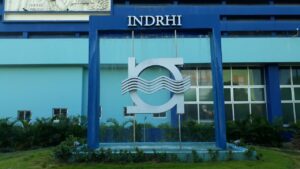The National Institute of Hydraulic Resources, INDRHI, socialized with representatives of the water, environment and production sectors of this municipality of Constanza, the results of the research project entitled “Renaturalization and Conservation of the Water Resources of the Valle Nuevo National Park, through Hydromorphological research”.
The purpose is to evaluate the conditions of this reservoir, which supplies the Nizao, Yaque del Sur and Yuna river basins.
Juan Fulvio Ureña, INDRHI’s environmental management advisor, represented Olmedo Caba Romano, executive director, highlighting the importance given by the official to this project, who, upon taking over the management of the institute, motivated the completion of the project with broad cooperation. Ureña also emphasized the importance of studying this area known as the “Mother of Waters” because of the hundreds of rivers and streams that originate here, providing the country with guaranteed water for its multiple uses.
 Juan Chalas, coordinator of the Center for the Sustainable Management of Water Resources in the Caribbean Island States (CEHICA), which operates at INDRHI, and co-investigator of the project, explained that the study was sponsored by the National Fund for Innovation and Scientific and Technological Development, Fondocyt, of the Ministry of Higher Education, Science and Technology (MESCYT), and by INDRHI.
Juan Chalas, coordinator of the Center for the Sustainable Management of Water Resources in the Caribbean Island States (CEHICA), which operates at INDRHI, and co-investigator of the project, explained that the study was sponsored by the National Fund for Innovation and Scientific and Technological Development, Fondocyt, of the Ministry of Higher Education, Science and Technology (MESCYT), and by INDRHI.
“We have already evaluated, now we are explaining the results to you, and then it is up to us to present specific actions to the decision-making bodies so that together we can work to repair the damage”, said the specialist. He added that the actions to be applied will be accompanied by a training process.
The presentation was given by the advisor Juan Luis Rodríguez, who is a Dominican living in Germany, from where he traced the academic ties necessary to carry out the process with CEHICA. He explained, together with Agustina García, principal investigator of the project, that the hydromorphological evaluation consists of a visual inspection of the structure or a riverbed, the bed, its banks, the riverbank area, among other aspects. She indicated the technology implemented in the process, highlighting the use of thermal cameras that allowed the detection of stretches or watercourses, as well as drone flights to gather information and sensors to measure water flows and water salubrity levels.
The researcher Agustina García said that the evaluation focused on the Nizao, La Cueva and Grande rivers, which was scheduled for a shorter period of time but because of the Covid-19 pandemic, the process was lengthened a little. He concluded by thanking the Ministry of the Environment and Natural Resources for providing the required information on a permanent basis.
Present during the socialization of the results of the investigation were Humberto Collado, president of the National Union of Agricultural Producers, UNAPRODA; María Felisa Gutiérrez, president of the Association for the Development of Constanza, and Amalia Rodríguez, of the Constanza Mining Funds.
The Ministry of Environment and Natural Resources was represented by Julio César de los Santos, from the Vice-Ministry of Protected Areas and Biodiversity, who is the Administrator of Valle Nuevo National Park, and Ricardo Quezada, representative of the Environment in Constanza.
Learn More: News

